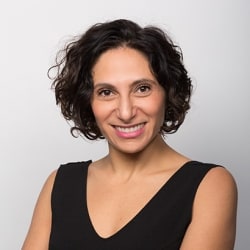Sleep apnea is not a condition that affects only adults and seniors. Indeed, we estimated that there is 1 to 5% of kids who suffer from sleep apnea and the consequences that are associated with this condition. As these consequences may be serious, we wish to raise awareness to our patients about sleep apnea in a child, its consequences, and its treatment.
What is sleep apnea?
Obstructive sleep apnea (OSA) is a condition which results to a partial or complete blockage of respiratory tracts of the child when sleeping. We may observe it when the child is making an extra effort to breathe, but the air is not going through or there is not enough of it.
Sleep apnea is translated as three direct physiological consequences:
- A decrease of oxygen level in the bloodstream;
- An increase of CO2 level in the bloodstream;
- A notable decrease of quality sleep because it is interrupted many times per night.
Signs and symptoms of sleep apnea in children
Many signs may lead to the presence of obstructive sleep apnea in children when they are sleeping. Among these signs, we look for:
- Snoring or heavy breathing;
- Pauses in breathing, meaning that breathing stops, sometimes for a few seconds. Theses pauses are followed by the resumption of heavy breathing when children catch their breath;
- The child’s neck and chest muscles seem tense and pulled when breathing while sleeping;
- The child may take weird sleeping positions to clear his airways;
- Nasal breathing seems bothering during sleep.
Apart from these symptoms exhibited during sleep, we may observe sleep apnea by noticing secondary symptoms, such as nocturnal bedwetting, excessive fatigue during daytime even if sleeping hours at night seem enough, restlessness or lack of patience and focus during daytime. In infants, obstructive sleep apnea may harm growth and weight gain, especially by causing problems during feeding.
Causes of sleep apnea in children
In many cases, sleep apnea in children is caused by the enlargement of tonsils and adenoids. These structures are soft tissues located in the nasal cavities and the throat. When they become too big, they may block the passage of air when the child breathes while sleeping because the muscles of the throat are relaxed during sleep. It is important to note that the risk is higher in premature infants because their jaw and neck are generally less well developed, which can make their respiratory tracts narrower. The risk of swelling of the soft tissues of the throat is as high for children suffering from overweight or obesity. In these cases, a surgical intervention may be necessary to remove the tissues obstructing the respiratory tracts and to treat sleep apnea.
Also note that in certain cases, sleep apnea in children may be due to a problem with the formation of the jaw.
If in doubt, consult your dentist
Although dentists cannot make a diagnosis of sleep apnea, they can recognize certain signs and guide parents to the right resources for the diagnosis and management of the problem.
At Dents Mon Quartier, we count on Dr Eric Chang, general dentist, as part of our team. He focuses his practice on pediatric care and knows the oral needs of young children as well as the health problems they may suffer from. If you have any doubt about the condition of your child or have noticed signs and symptoms associated with sleep apnea in your children, ask for a consultation in pediatric dentistry at LaSalle with Dr Chang and his team.

Approved by Dre Charouk
Dr. Joumana Charouk, D.M.D, is proud to offer her patients exceptional care that combines experience, efficiency and good humor.
Dre Joumana Charouk, D.M.D
